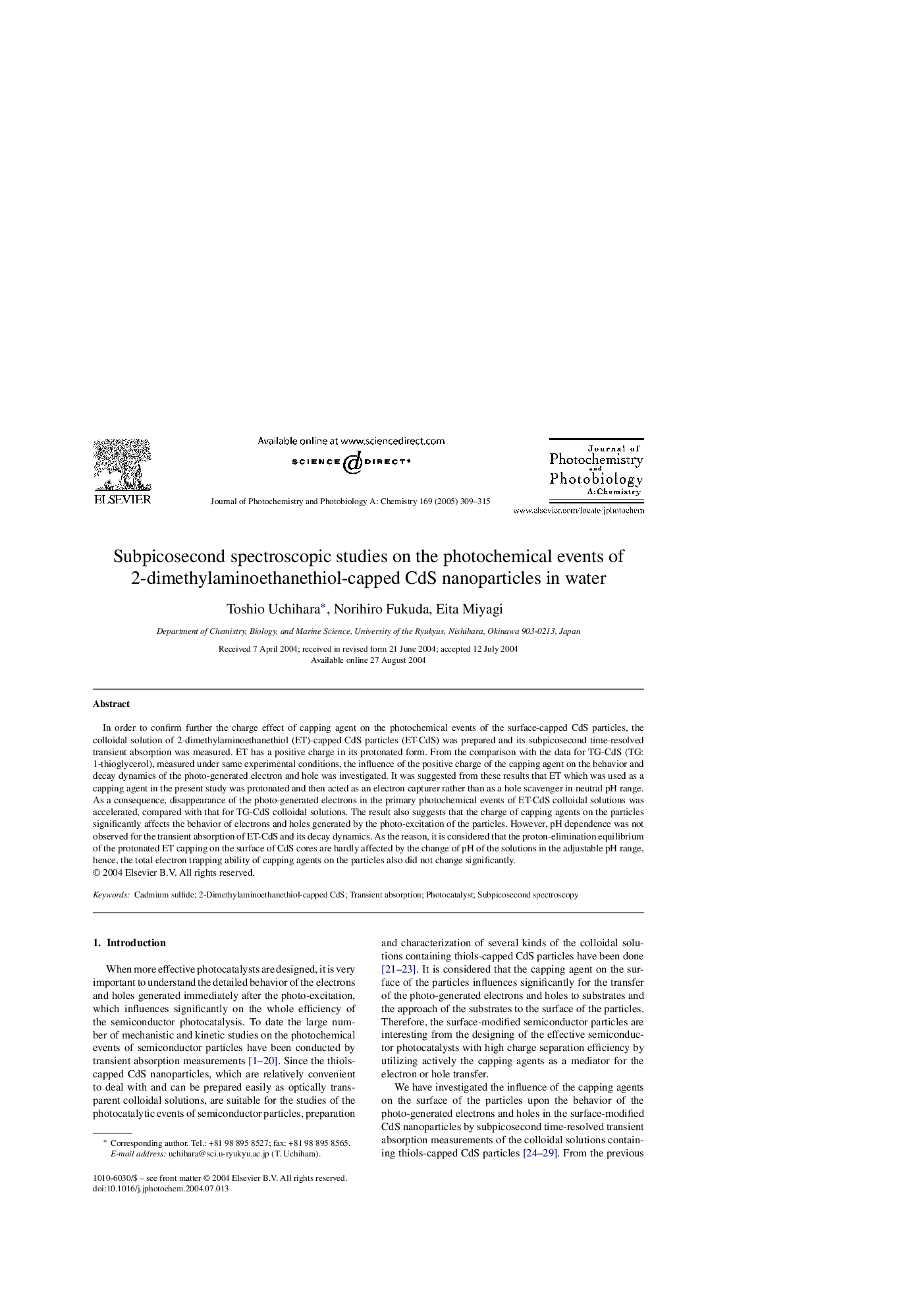| Article ID | Journal | Published Year | Pages | File Type |
|---|---|---|---|---|
| 9605753 | Journal of Photochemistry and Photobiology A: Chemistry | 2005 | 7 Pages |
Abstract
In order to confirm further the charge effect of capping agent on the photochemical events of the surface-capped CdS particles, the colloidal solution of 2-dimethylaminoethanethiol (ET)-capped CdS particles (ET-CdS) was prepared and its subpicosecond time-resolved transient absorption was measured. ET has a positive charge in its protonated form. From the comparison with the data for TG-CdS (TG: 1-thioglycerol), measured under same experimental conditions, the influence of the positive charge of the capping agent on the behavior and decay dynamics of the photo-generated electron and hole was investigated. It was suggested from these results that ET which was used as a capping agent in the present study was protonated and then acted as an electron capturer rather than as a hole scavenger in neutral pH range. As a consequence, disappearance of the photo-generated electrons in the primary photochemical events of ET-CdS colloidal solutions was accelerated, compared with that for TG-CdS colloidal solutions. The result also suggests that the charge of capping agents on the particles significantly affects the behavior of electrons and holes generated by the photo-excitation of the particles. However, pH dependence was not observed for the transient absorption of ET-CdS and its decay dynamics. As the reason, it is considered that the proton-elimination equilibrium of the protonated ET capping on the surface of CdS cores are hardly affected by the change of pH of the solutions in the adjustable pH range, hence, the total electron trapping ability of capping agents on the particles also did not change significantly.
Related Topics
Physical Sciences and Engineering
Chemical Engineering
Bioengineering
Authors
Toshio Uchihara, Norihiro Fukuda, Eita Miyagi,
